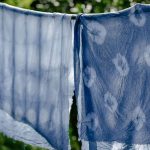When you own jacquard garments, taking proper care of them is essential to maintain their beauty and longevity. Start by checking the care label, as it provides important washing and drying instructions tailored to your piece. You might think machine washing is easier, but handling them with care can prevent unwanted damage. From the right washing techniques to storing methods that preserve shape, there's a lot to consider. Understanding each step can make all the difference, especially when it comes to handling unexpected stains or damage. What are the best practices for ensuring your jacquard pieces stand the test of time?
Table of Contents
Understanding Jacquard Fabric
Understanding jacquard fabric starts with recognizing its intricate weave, which features complex patterns created directly into the fabric rather than printed on top. This weaving technique allows for a depth and texture that you won't find in many other fabrics. When you look closely, you'll notice the stunning detail that jacquard offers, making it a popular choice for upholstery, garments, and accessories.
Jacquard fabric can be made from a variety of fibers, including cotton, silk, and synthetic materials. Each type brings its unique characteristics, affecting how the fabric drapes and feels. You'll often find jacquard used in items like dresses, blouses, and even home decor, due to its versatility and aesthetic appeal.
One key aspect of jacquard is its durability. The intricate weaving process creates a strong, resilient fabric that can withstand regular use. However, this doesn't mean it's indestructible. Understanding how it's made helps you appreciate its quality and informs how you care for it.
Washing Techniques for Jacquard
When it comes to washing your jacquard garments, you've got a few options to consider.
Whether you choose to hand wash or machine wash, it's crucial to follow the right techniques to maintain the fabric's integrity.
Let's break down the best washing methods and drying tips to keep your jacquard looking its best.
Hand Washing Recommendations
To keep your jacquard garments looking their best, hand washing is the safest method to prevent damage.
Start by filling a basin with cool water and add a gentle detergent specifically designed for delicates. Avoid using bleach or fabric softeners, as these can harm the intricate patterns.
Gently submerge your jacquard piece in the water, allowing it to soak for about 10 to 15 minutes. Use your hands to gently agitate the fabric, ensuring the detergent penetrates the fibers without rubbing or scrubbing, which could cause fraying or distortion.
After soaking, drain the soapy water and refill the basin with cool, clean water to rinse. Rinse thoroughly to remove all soap residue, as leftover detergent can lead to discoloration.
Once rinsed, avoid wringing or twisting the garment. Instead, press the water out gently by pressing the fabric against the side of the basin.
Lay the garment flat on a clean towel to absorb excess water, then reshape it to its original form. Finally, dry it away from direct sunlight to prevent fading.
Following these steps ensures your jacquard garments maintain their beauty and longevity.
Machine Washing Guidelines
While hand washing is the safest method for caring for jacquard garments, many people prefer the convenience of machine washing when the care label allows it.
To ensure you protect your jacquard pieces during a machine wash, start by turning them inside out. This helps preserve the intricate patterns and prevents abrasion.
Next, choose a gentle cycle with cold water. Hot water can cause colors to bleed and may shrink the fabric. Use a mild detergent specifically designed for delicate fabrics, as this will help maintain the texture and appearance of your jacquard items. Avoid bleach or harsh chemicals, as they can damage the fibers.
If your jacquard garment has embellishments or delicate threads, consider placing it in a mesh laundry bag. This extra layer of protection will minimize movement and friction, reducing the risk of snagging or tearing.
Make sure not to overload your washing machine; give your garments enough space to move freely.
Drying Techniques Explained
After washing your jacquard garments, choosing the right drying technique is crucial to maintain their quality and prevent damage.
Start by gently shaking out the garment to remove excess water without wringing or twisting, which can distort the fabric's shape.
If possible, lay your jacquard piece flat on a clean, dry towel. This method allows air to circulate and helps the garment maintain its shape. Avoid hanging it, as this can stretch the fabric and lead to misshapen designs.
When you need to speed up the drying process, consider using a fan or placing the garment in a well-ventilated area, but keep it out of direct sunlight to prevent fading.
If you must use a dryer, opt for a low heat setting and place the garment in a mesh laundry bag to protect it from friction and snagging.
Always check the care label for specific drying instructions, as some fabrics might require more delicate handling.
Drying Methods to Preserve Quality
Choosing the right drying method can greatly enhance the longevity and appearance of your jacquard garments. To keep your pieces looking their best, follow these effective drying techniques:
- Air Drying: Lay your jacquard garment flat on a clean, dry towel or a drying rack. This method prevents stretching and helps maintain the fabric's shape. Avoid direct sunlight, as it can fade colors.
- Tumble Drying on Low: If you're short on time, use a tumble dryer set to a low heat setting. Make sure to remove the garment while it's still slightly damp to prevent over-drying, which can damage the fibers.
- Steam Drying: For a fresh look, hang your jacquard garment in the bathroom while you take a hot shower. The steam can help remove wrinkles and refresh the fabric without direct contact. However, be cautious of excessive moisture.
Ironing and Pressing Guidelines
Ironing jacquard garments requires careful attention to prevent damage and maintain their intricate designs. Start by checking the care label for specific instructions, as some jacquard fabrics may have unique requirements.
Always use a low to medium heat setting on your iron, as high temperatures can cause the fibers to melt or distort. Before you begin, turn the garment inside out to protect the surface. If the fabric is particularly delicate, consider placing a thin cloth or pressing cloth between the iron and the garment. This additional layer helps shield the intricate patterns from direct heat.
When ironing, use gentle, sweeping motions instead of pressing down hard. Focus on one section at a time, and lift the iron rather than sliding it across the fabric to avoid creating creases. For stubborn wrinkles, steam can be your best friend—just keep the iron slightly above the fabric without making direct contact.
Lastly, allow the garment to cool completely before wearing or putting it away. Following these guidelines will help keep your jacquard garments looking sharp and beautiful for years to come.
Storing Jacquard Garments Properly
To keep your jacquard garments in top condition, proper storage is key after you've finished ironing them. These fabrics can be delicate, so you'll want to take a few precautions to prevent damage and maintain their beauty.
Here are three essential tips for storing your jacquard garments:
- Use Hangers: Opt for padded or wooden hangers to prevent creases and maintain the shape of your garments. Avoid wire hangers, as they can leave marks on the fabric.
- Keep Away from Sunlight: Store your jacquard pieces in a cool, dark place. Direct sunlight can fade the vibrant colors and weaken the fibers over time.
- Avoid Overcrowding: Make sure to give your garments enough space in the closet. Overcrowding can lead to wrinkles and unwanted pressure on the fabric, compromising its integrity.
Handling Stains and Damage
When you notice a stain on your jacquard garment, it's crucial to identify it correctly before taking action.
Acting quickly can make all the difference, so knowing how to treat stains immediately is key.
If damage occurs, understanding how to repair the fabric will help preserve your beloved pieces.
Identifying Stains Properly
Identifying stains on jacquard garments quickly is crucial for effective treatment and preventing permanent damage. When you spot a stain, take a moment to assess it properly. Different types of stains require different approaches, so knowing what you're dealing with can save your garment.
Here are three tips to help you identify stains effectively:
- Color and Texture: Observe the color of the stain and the texture of the fabric. Some stains, like oil, often appear shiny, while others, like wine, may be dull and matte.
- Source of the Stain: Consider where the stain came from. Was it food, drink, or something else? Knowing the source can help you determine the best treatment method.
- Age of the Stain: If the stain is fresh, it's easier to treat than an older one. Check how long the stain has been there, as older stains may require more intensive care.
Taking the time to identify the stain correctly puts you on the right path to preserving your jacquard garments and keeping them looking their best.
Immediate Stain Treatment
Once you've identified the stain, acting quickly can make a significant difference in preserving your jacquard garment.
Begin by gently blotting the stain with a clean, dry cloth to absorb as much of the spill as possible. Avoid rubbing, as this can spread the stain and damage the delicate fabric.
Next, mix a solution of cold water and a mild detergent. Dampen a clean cloth with this solution and gently dab the stained area. Always work from the outside edges of the stain towards the center to prevent it from spreading. If the stain persists, you might consider using a specialized stain remover designed for delicate fabrics, but test it on an inconspicuous area first.
After treating the stain, rinse the affected area with cold water to remove any detergent residue. Blot the area again with a dry cloth to absorb excess moisture.
If you're unable to remove the stain completely, let the fabric air dry instead of using heat, which could set the stain.
Repairing Fabric Damage
Assessing and addressing fabric damage promptly can help restore the beauty of your jacquard garments. When you spot a stain or tear, don't wait too long to tackle it. Here's what you can do to effectively repair fabric damage:
- Identify the Stain: Determine what caused the stain. Different stains require different treatments. For example, oil-based stains need a different approach compared to water-based ones.
- Choose the Right Cleaner: Use a gentle cleaner suitable for jacquard fabric. Test any cleaner on a small, inconspicuous area first to ensure it doesn't damage the fabric.
- Repair Minor Tears: For small tears, you can use fabric glue or a needle and thread. Make sure to match the thread color to your garment to keep the repair discreet.
If the damage is extensive, consider taking your jacquard garment to a professional tailor. They've the expertise to restore your piece while maintaining its unique design.
Tips for Long-lasting Care
To keep your jacquard garments looking their best, always follow the care instructions on the label carefully. These garments often require specific washing methods to maintain their intricate patterns and textures. Generally, hand-washing in cold water with a mild detergent is the safest option. If you choose to machine wash, use a gentle cycle and a mesh laundry bag to protect the fabric.
Avoid using bleach or harsh chemicals, as they can damage the fibers. When it comes to drying, skip the dryer altogether. Instead, lay your jacquard items flat on a clean towel to air dry. This helps prevent stretching and maintains the garment's shape.
Store your jacquard pieces in a cool, dry place, away from direct sunlight. If possible, hang them to avoid creasing. If you must fold them, place tissue paper between layers to minimize pressure on the fabric.
Frequently Asked Questions
Can I Wear Jacquard in Humid Weather?
Yes, you can wear jacquard in humid weather. The fabric's breathability makes it suitable for warm conditions, but you might want to opt for lighter colors and styles to stay comfortable throughout the day.
Are Jacquard Fabrics Suitable for Formal Occasions?
Jacquard fabrics are perfect for formal occasions. Their intricate patterns and textures add sophistication to your outfit. When styled correctly, you'll definitely stand out while maintaining an elegant appearance suitable for any upscale event.
How Can I Identify High-Quality Jacquard Fabric?
To identify high-quality jacquard fabric, check for a tight weave and vibrant, intricate patterns. Run your fingers over it; smoothness indicates quality. Also, look for weight—heavier fabrics generally signify better craftsmanship and durability.
Is Jacquard Fabric Eco-Friendly?
Jacquard fabric can be eco-friendly, depending on its materials and production methods. When you choose organic fibers or sustainable practices, you're supporting a greener choice. Always check labels to ensure you're making an environmentally conscious decision.
Can Jacquard Garments Be Tailored or Altered?
Yes, you can tailor or alter jacquard garments. Just ensure you work with a skilled tailor familiar with this fabric type to maintain its unique patterns and prevent any damage during the alteration process.
- How to Source Fabric From China: Tips and Tricks - June 20, 2025
- How to Remove China Marker From Fabric: Easy Steps - June 20, 2025
- How to Import Fabric From China: a Comprehensive Guide - June 20, 2025






